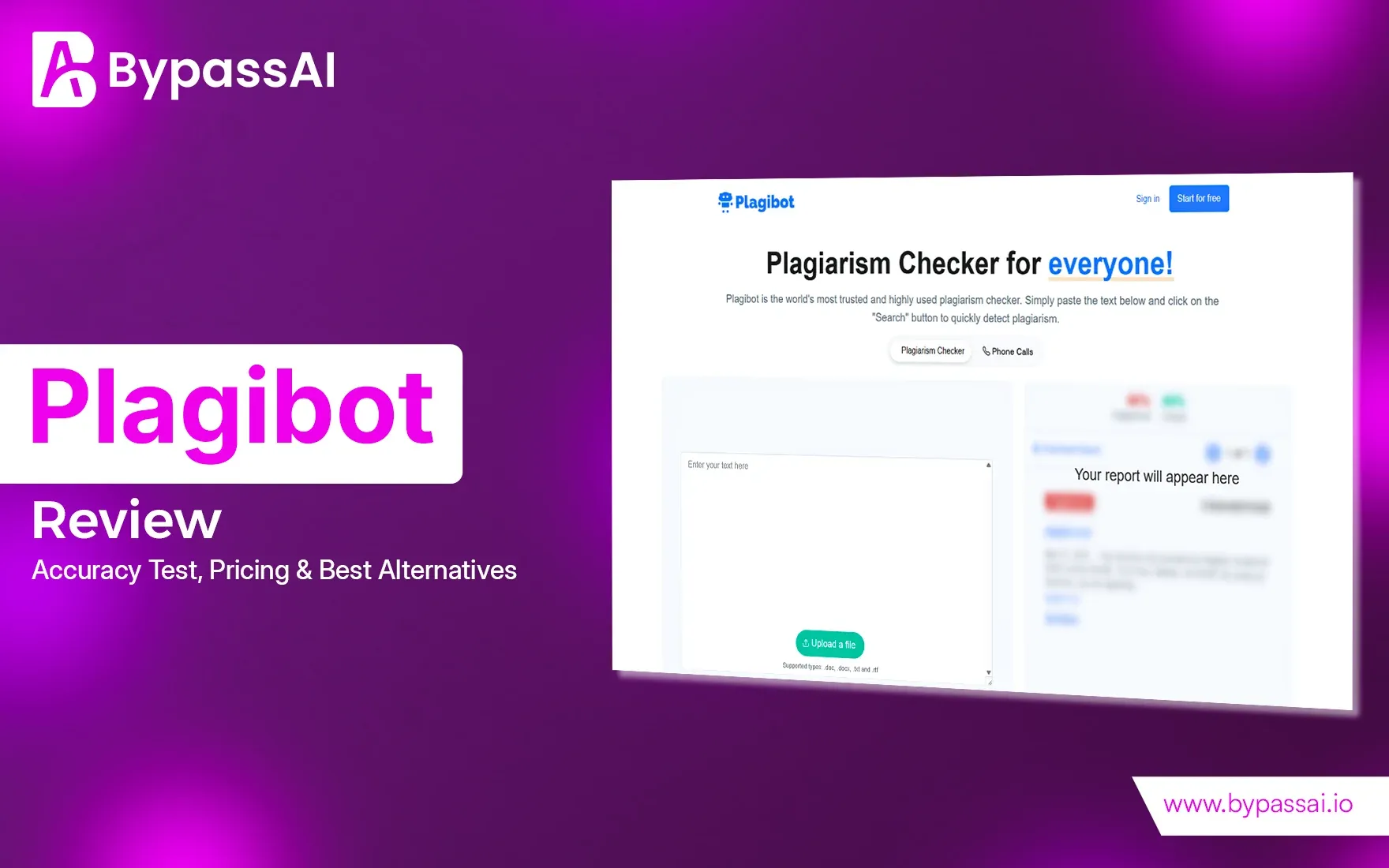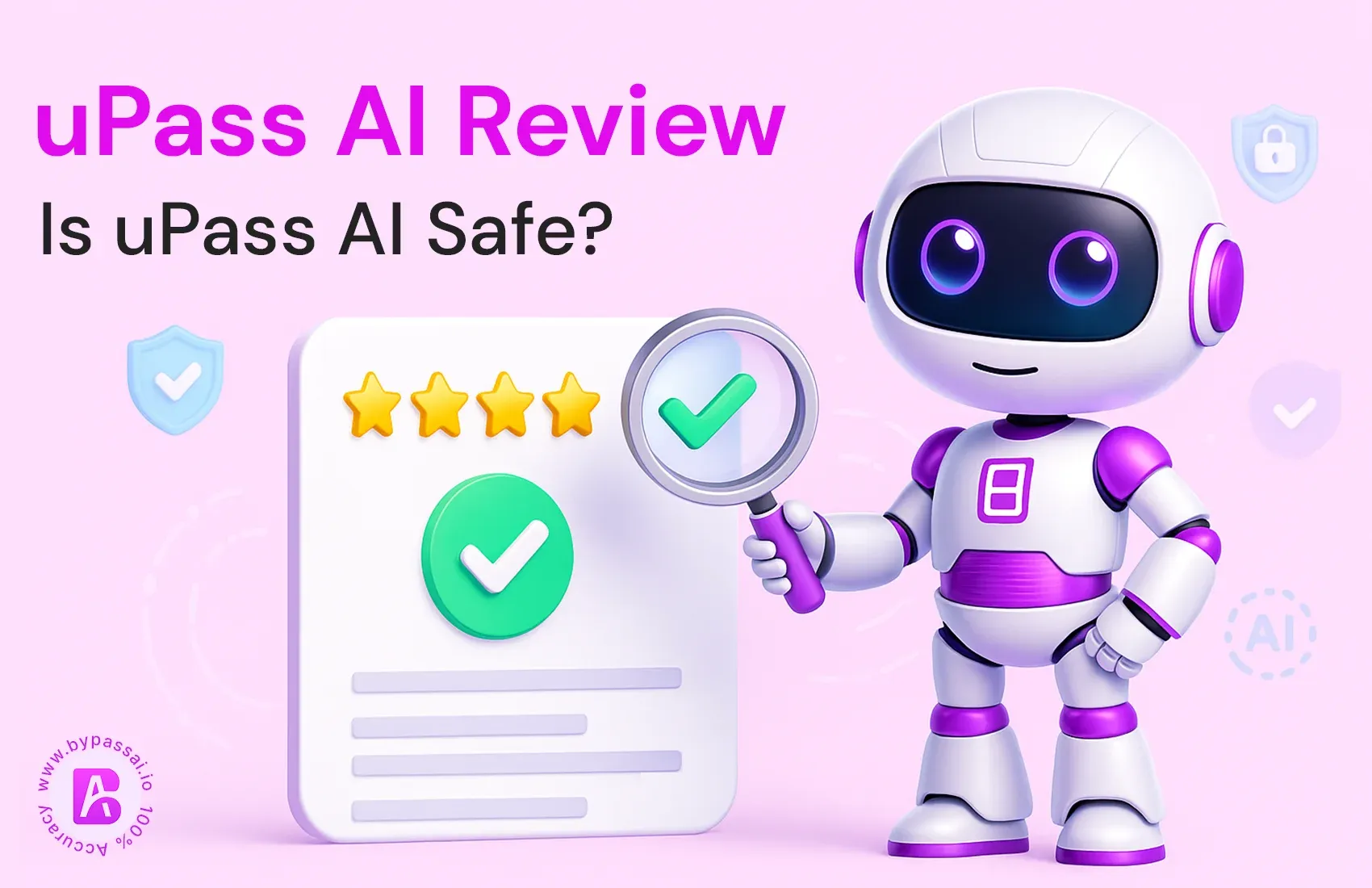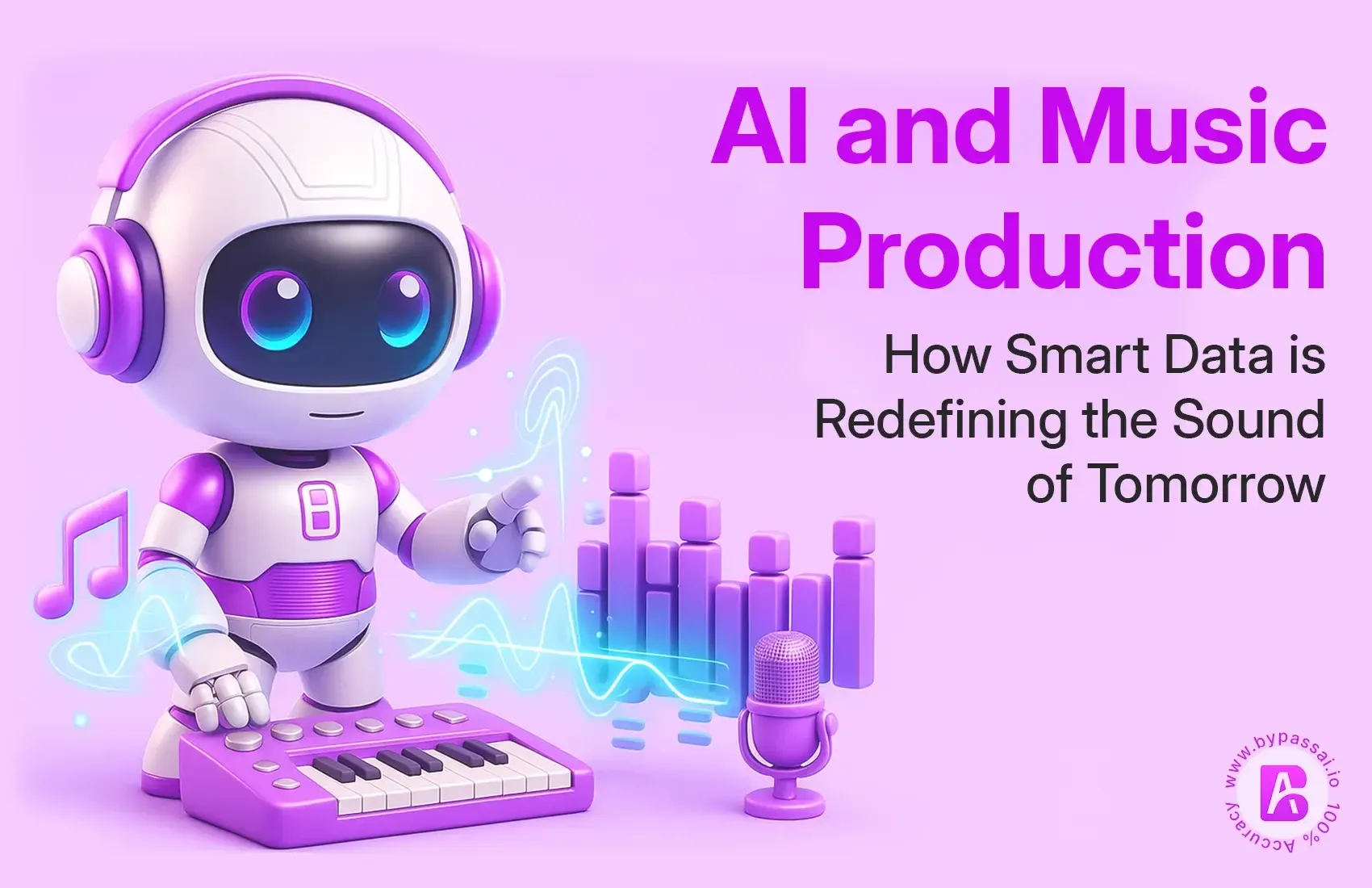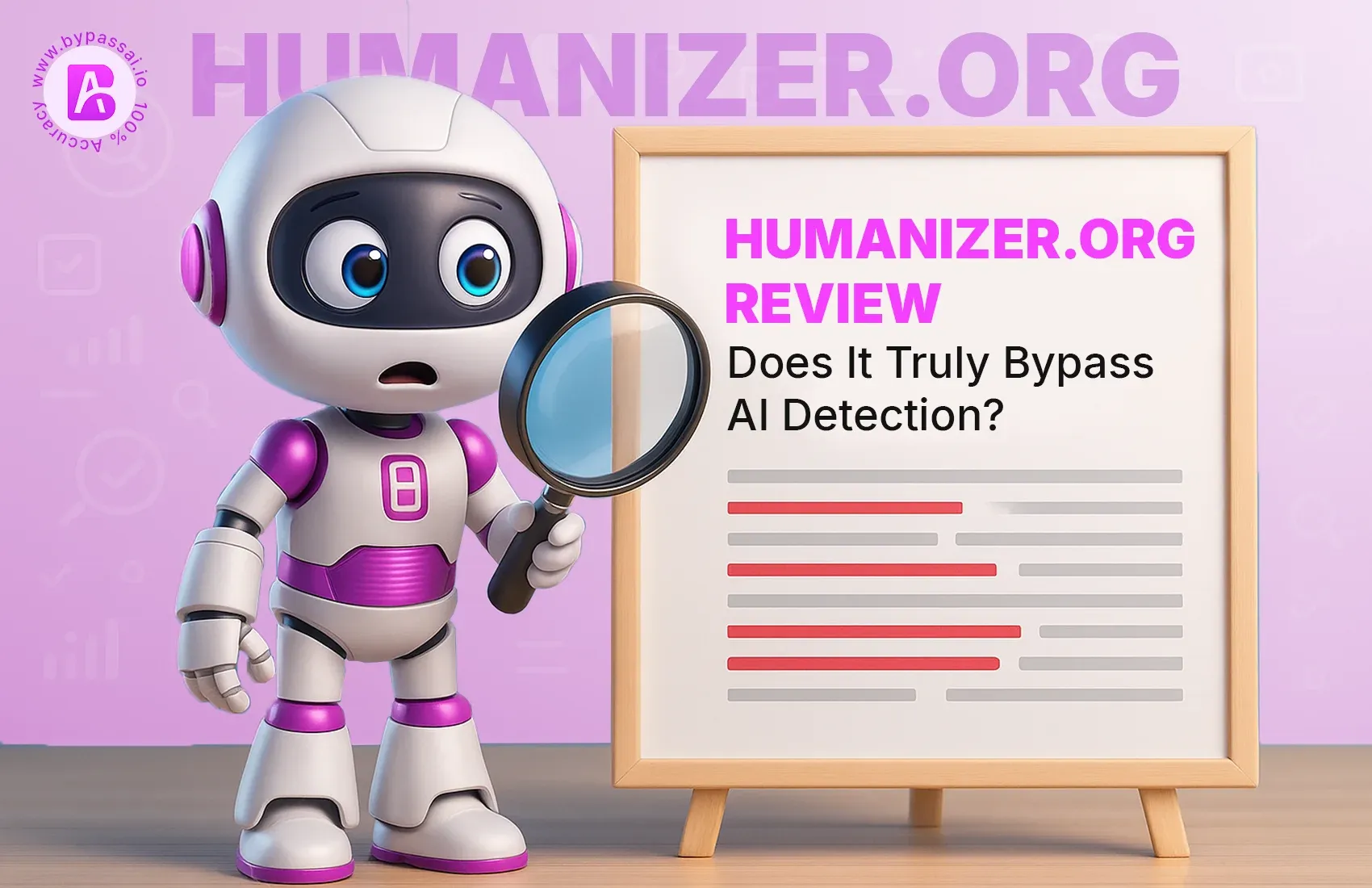Sign In
Welcome to Bypass AI! Sign in to continue your exploration of our platform with all its exciting features.
Forgot Password?
Don’t have an account ? Sign up
Sign Up
Embrace the Future with Bypass AI! Sign up now and let's rewrite the possibilities together.
You have an account ? Sign In
Enter OTP
We’ll send you an OTP on your registered email address
Back to Login
Forgot Password
We'll Send You An Email To Reset Your Password.
Back to Login
Enter OTP
We'll send you an email to reset your password.
Back to Login
Confirm Password
Please enter your new password.
TABLE OF CONTENTS
Quick Summary
What Is Plagibot?
Why Are People Interested in Plagibot & Who Is It Best For?
Accuracy Test of Plagibot Plagiarism Checker
Cost of Plagibot Plagiarism Checker
Best Alternatives to Plagibot
Conclusion
FAQs
Assessment of plagiarism has become quite a task due to the widespread use of AI for content generation. Plagiarism detection with the use of tools like Plagibot asserts that whether you are a student, creating content or involved in teaching, you are in a better position to differentiate well-credited works from those which are not original. However, is it truly very trustworthy? In this blog, we will carry out tests on this system to check its reliability, discuss its pricing, and match it with other similar options like Bypassai.IO, Grammarly, Quetext, and Scribbr.
Quick Summary
In this blog, the plagiarism detection software Plagibot is tested for accuracy and pricing while being simultaneously compared to other such tools. The final verdict reveals that although Plagibot is cheap and user-friendly, it is unable to effectively detect AI-based or paraphrased content. By contrast, Bypassai.IO, Grammarly, Quetext, and Scribbr provide much more reliable results in detection, especially for academic or professional use. So the blog suggests that serious users must consider these alternatives to achieve better results.
What Is Plagibot?
Plagibot is a web-based application for plagiarism detection intended to go over papers and find duplicate content. The software aim couldn’t be clearer for students, teachers, and authors who want to make sure that content is not fake. The functionality that both displays the check result in many formats and shows the differences is among the advantages of the utility.
Why Are People Interested in Plagibot & Who Is It Best For?
Plagibot has received positive responses in the realm of verification of copyright infringement because of its no-frills interface, affordability, and ease of use. Its popularity comes from the possibility of providing a solution for the people who require a more efficient way to check if content is a duplicate, especially in the education and digital content domains.
1. Students
Plagibot is mostly associated with academic learners who want to check if their work is plagiarism-free and authentic. The main reason why educators are more and more strict about academic dishonesty, and tools like this one are really significant for them, is that they don't want to deal with unwanted situations.
2. Content Creators
Writers, bloggers, marketers and freelancers use Plagibot to verify their work before publishing. Given the increasing development of AI-generated content, there is a higher risk of unknowingly publishing paraphrased or recycled content. Plagibot gives a fast way to check if there is any similarity to any existing work available online.
3. Educators and Academic Institutions
Plagibot is the first choice of teachers and professors. It's a great option for assessing student work and maintaining academic integrity. It is a convenient resource for quickly assessing essays and research papers for copied content. Plagibot also has lower-cost plans compared to enterprise-level solutions for institutions with budget constraints.
Accuracy Test of Plagibot Plagiarism Checker
To find out just how accurate Plagibot is, we conducted a real-world comparison test using content from Bypassai.IO. The test was reading across two different plagiarism checkers, Bypassai.IO's and Plagibot, on the same content to measure overall detection performance.
Part 1: Plagiarism Test of Bypassai.IO Content
Step 1: Selecting the Content
We started our task by selecting the published content from Bypassai.IO’s blog directly. In particular, we took the extracts from the article that carried the title “AI Content Detector False Positives”. The source of the content used can be found at the following link

Step 2: Test in Bypassai.IO Plagiarism Checker
The first thing we have done to test the originality of this content was to run it through the Bypassai.IO plagiarism checker. It was no surprise that the tool pointed out the content as being duplicated or, in other words, it's just a rehashed version of the previous one. This fact proves that the Bypassai.IO plagiarism tool is functioning properly and can find the data that has already been fed to it.

Step 3: Test in Plagibot Plagiarism Checker
Then, we tested the same content from Bypassai.IO in Plagibot's plagiarism checker, and Plagibot could hardly detect any—or didn't detect any—plagiarism, although the content was copied directly from a published source. This is indicative of a serious flaw in Plagibot's ability to detect plagiarism published on the web in the real world, especially texts related to AI-aligned subjects or generated by AI.

Part 2: Plagiarism Test of Plagibot Content
Step 1: Selecting the Plagibot Article Content
For this section of the test, we took a portion of Plagibot's official blog post dealing with plagiarism and the law. Titled "Is Plagiarism a Crime?" the article is publicly available on the company's website and goes into great detail regarding the various legal interpretations of plagiarism. By using content published by Plagibot itself, we sought to give various plagiarism checkers a fair chance in source recognition for well-indexed online material.
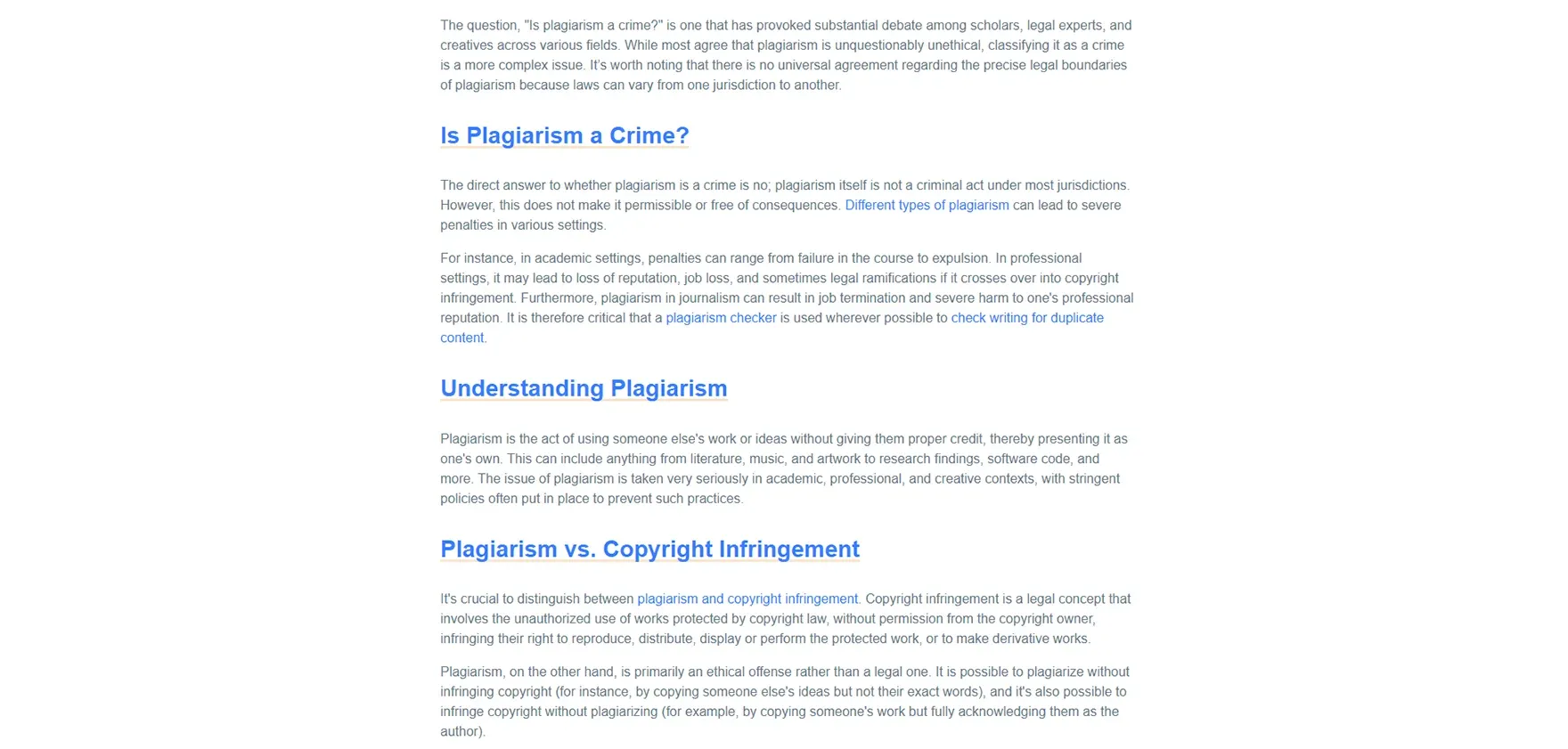
Step 2: Test in Bypassai.IO Plagiarism Checker
Plagiarizing the content using Plagibot's AI, we proceeded with an originality check on it through Bypassai.IO's plagiarism checker. In fact, the tool actually traced the original source and gave a warning regarding the existence or potential plagiarization of the content. This proves that the system in place with Bypassai.IO would check for content manipulated through AI but would also be able to flag web-published content from an extensive range of sources.
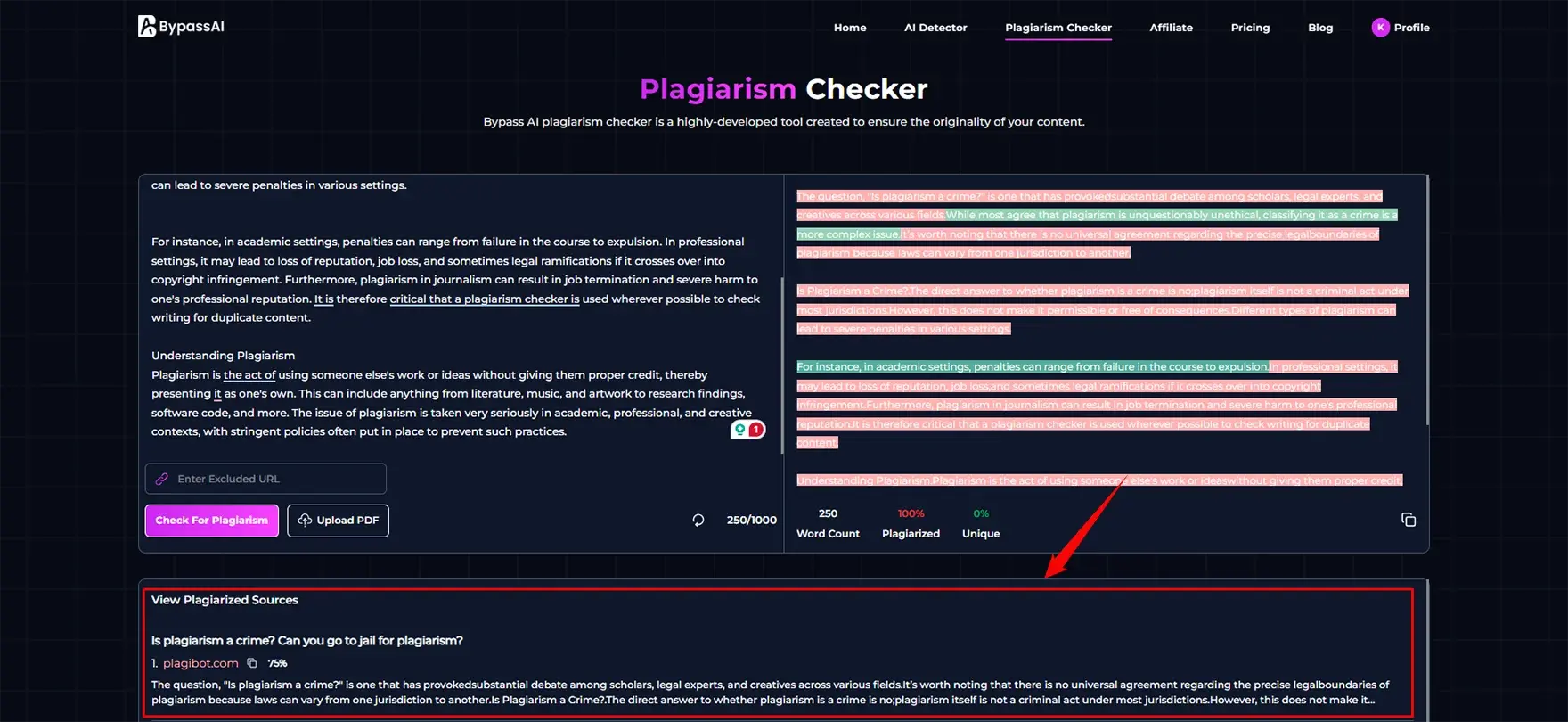
Step 3: Test in Plagibot Plagiarism Checker
We then submitted the same content into Plagibot’s own checker. Plagibot appropriately noted that the content was its own, and showed very little or no plagiarism at all. While this result seems appropriate, it is important to realize that it may not reflect its ability to detect third-party information or AI-generated paraphrased content.
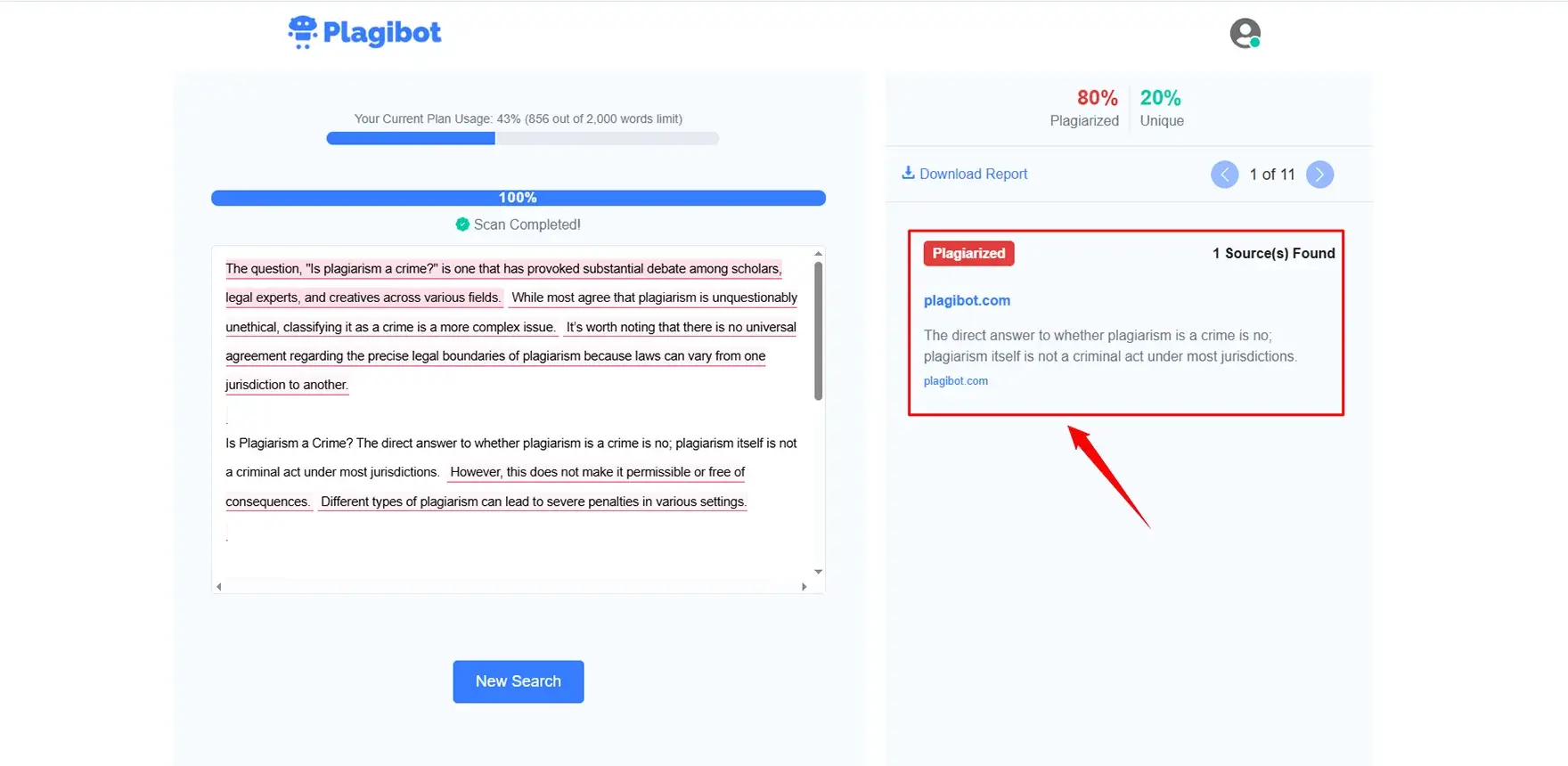
Cost of Plagibot Plagiarism Checker
Plagibot offers several pricing plans:
| Plan | Price | Features |
|---|---|---|
| Basic | Free | 2,000 words/month |
| Premium | $10/month | 30,000 words/month |
| Ultimate | Custom pricing | Team support, bulk checking |
While affordable, the limitations in accuracy raise questions about its value.
Best Alternatives to Plagibot
If you're looking for more powerful plagiarism detection websites, particularly ones that excel at detecting original content written by AI and paraphrased versions of plagiarized content, then the following options scored better than Plagibot in our accuracy research.
1. Bypassai.IO Plagiarism Checker
Bypassai.IO is a helpful tool showcasing top-tier performance for detecting AI rewrites. It detects plagiarism from paraphrased text and from AI-generated text while providing very precise and quick results. It is great for educators, publishers, or professionals that manage unstacked digital content.
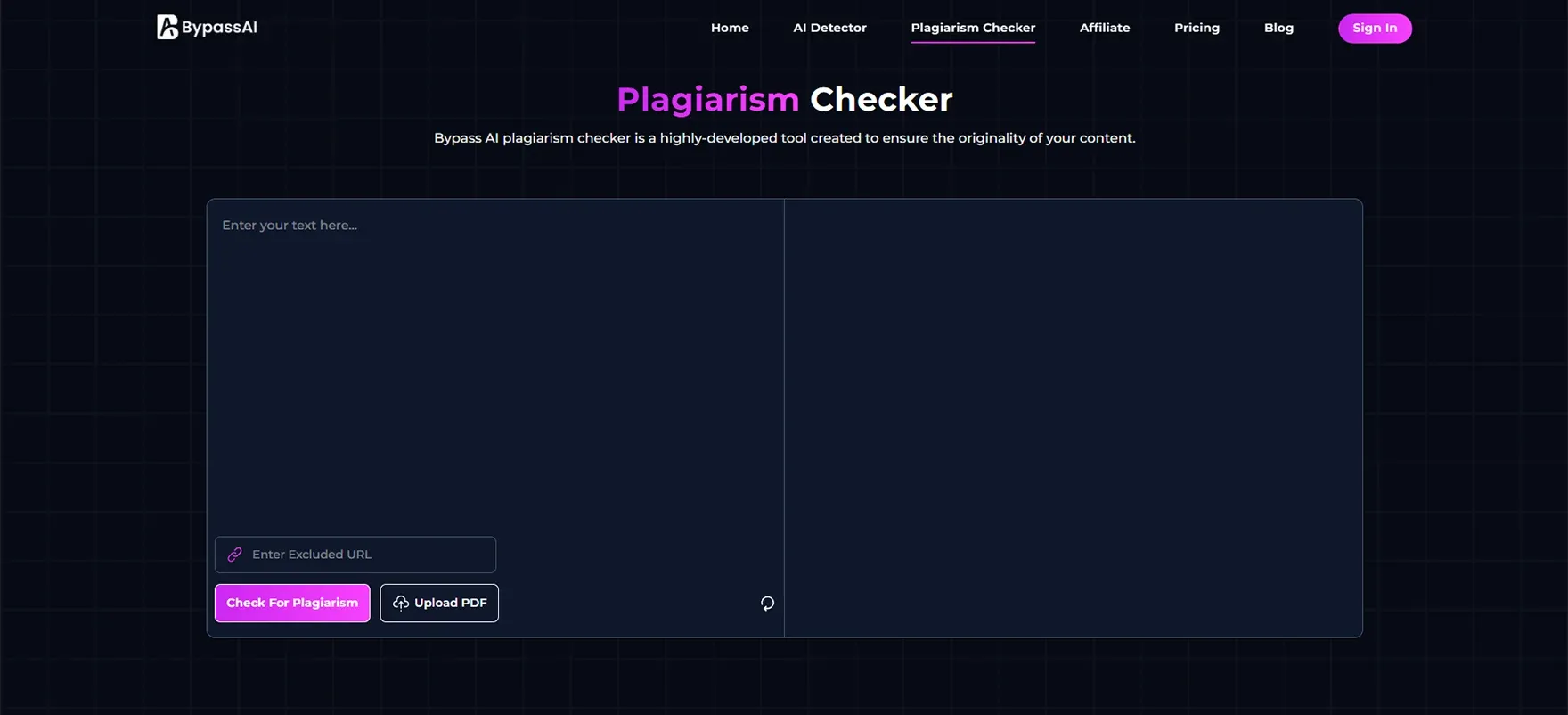
2. Grammarly Plagiarism Checker
As part of the Grammarly Premium service, this plagiarism checker is easy to use and very effective. It searches content from academic databases as well as millions of online pages. The strength of Grammarly is its ability to integrate the full suite of writing assistance options in one reliable product, making it a preferred choice for students and professionals.
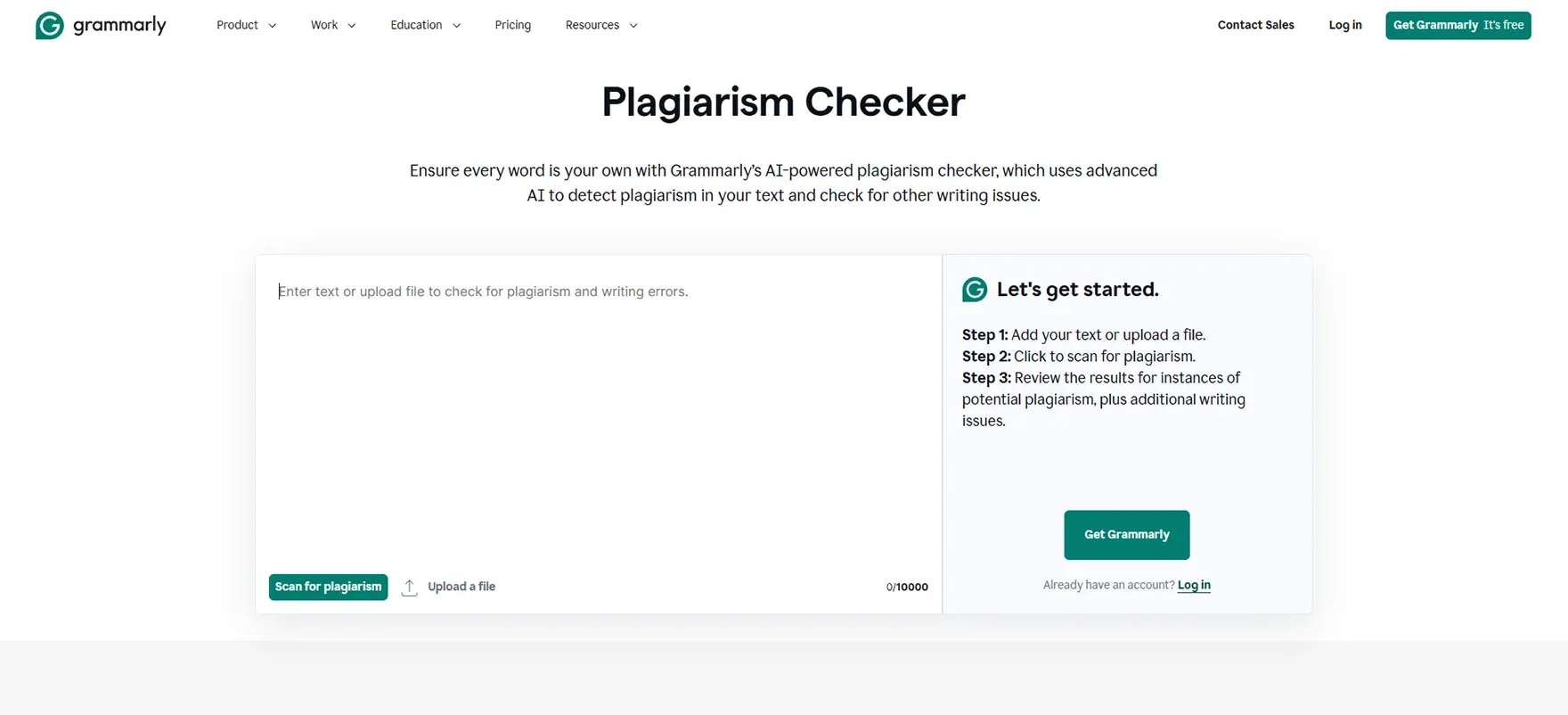
3. Quetext
Quetext has an easy-to-use interface. Quetext has a simple UI, a free version, and a Pro version, so it is appropriate for bloggers, freelance writers, and small businesses. It is not ideal in an academic setting - it simply has a more limited database coverage than other academic-friendly products.
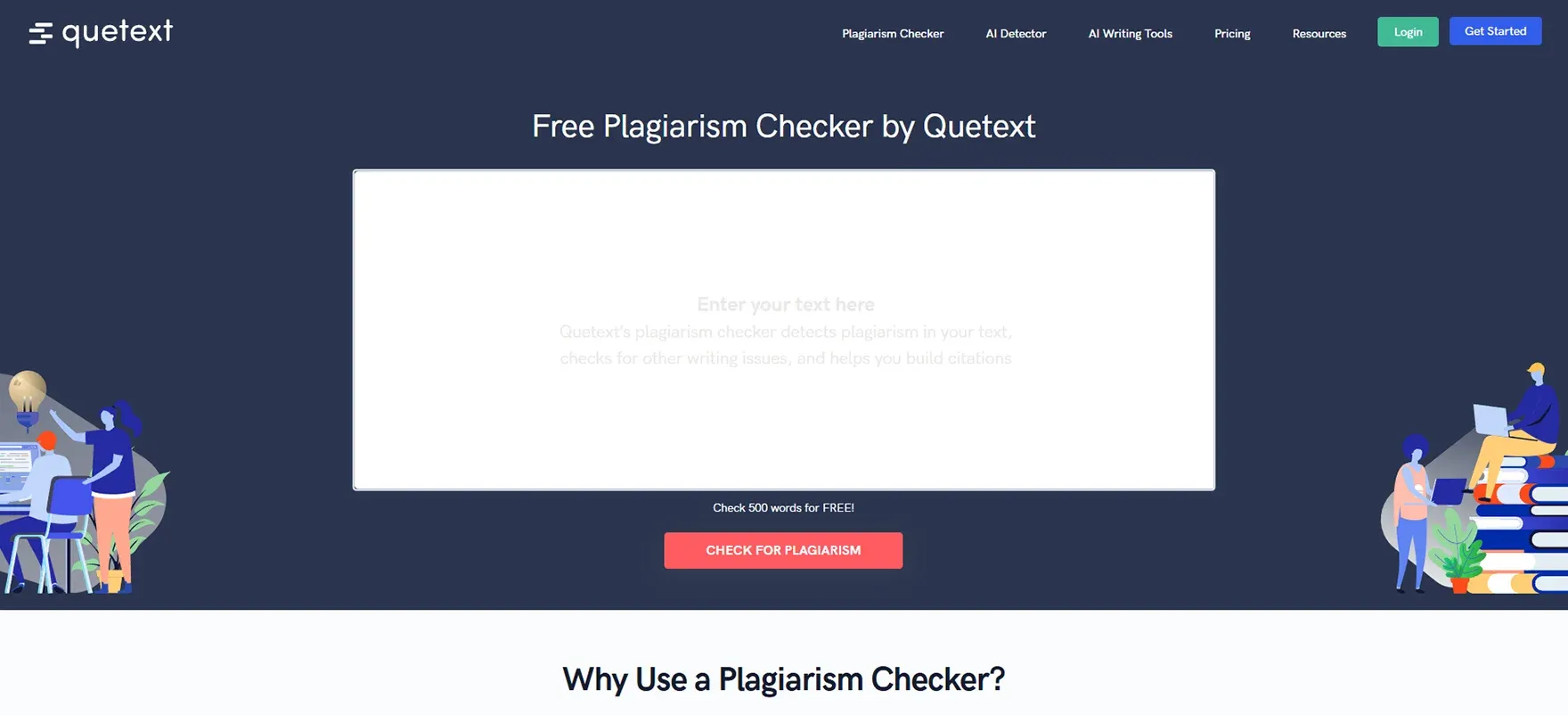
4. Scribbr Plagiarism Checker
Designed specifically for students, Scribbr connects to Turnitin's complete database, providing very accurate results. It may be more expensive, but it is worth it to get reliable, accurate detection, for submitting theses and academic papers where everything original matters.
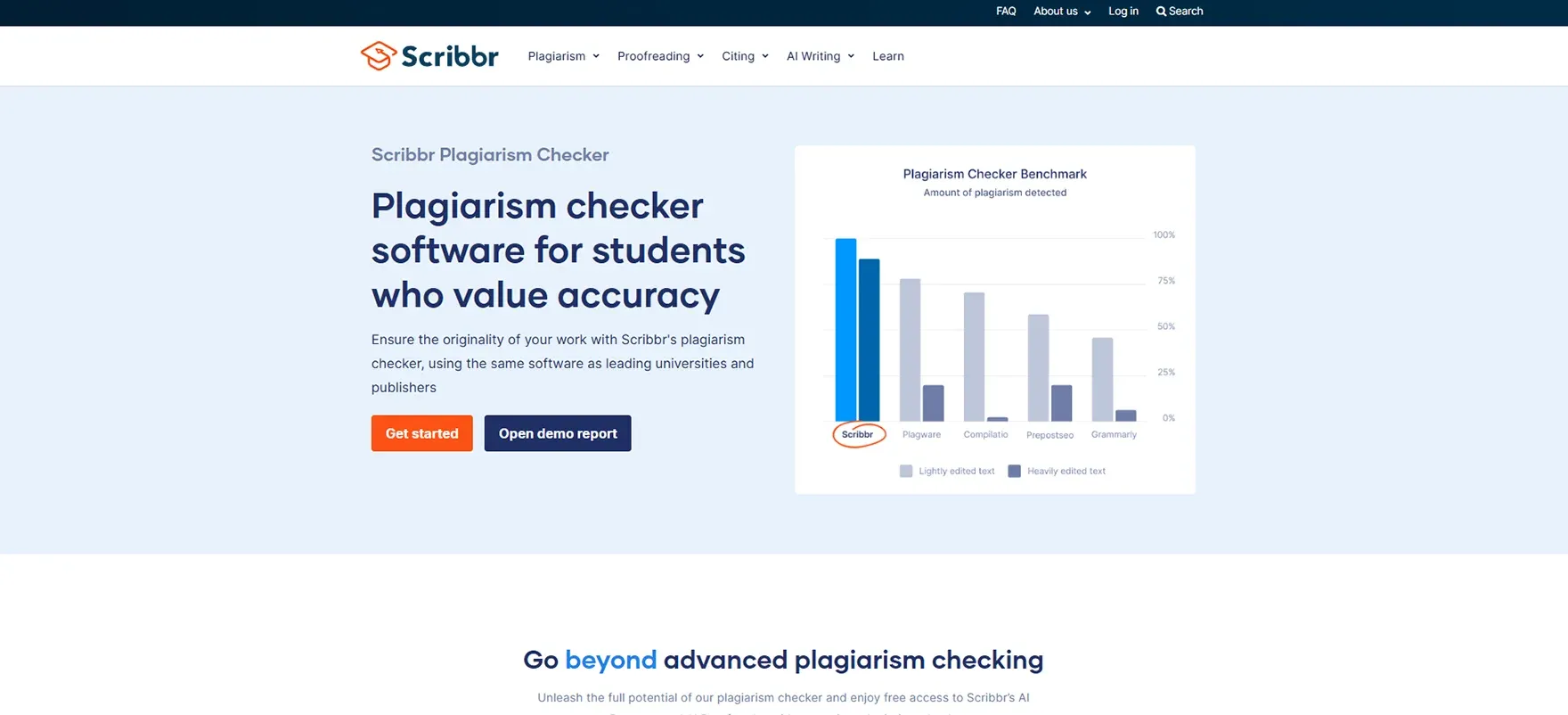
Conclusion
Plagibot might seem good at first, but in reality, its performance is far from satisfying. It fails to identify even the most accessible or AI-aided materials, which, in turn, places it among the least trustworthy tools for academic paper checks or professional content verification requests.
If you are a serious user, you can use Bypassai.IO and Grammarly for better results in the detection, especially against AI-driven or rephrased content.
FAQs
1. Is Plagibot free to use?
All the way free! There is a free plan available and there is a 2,000 word limit per month.
2. Can Plagibot detect AI-generated content?
We found that Plagibot can detect AI-generated content, but usually has difficulty detecting AI-rewritten or paraphrased content.
3. What is the best alternative to Plagibot?
Bypassai.IO is likely the most valuable alternative, it has the best detection capability in the event you encounter AI-generated content.
4. Does Plagibot work for academic use?
Not reliable. Other tools, such as Bypassai.IO or Grammarly, are more appropriate for academic integrity.

